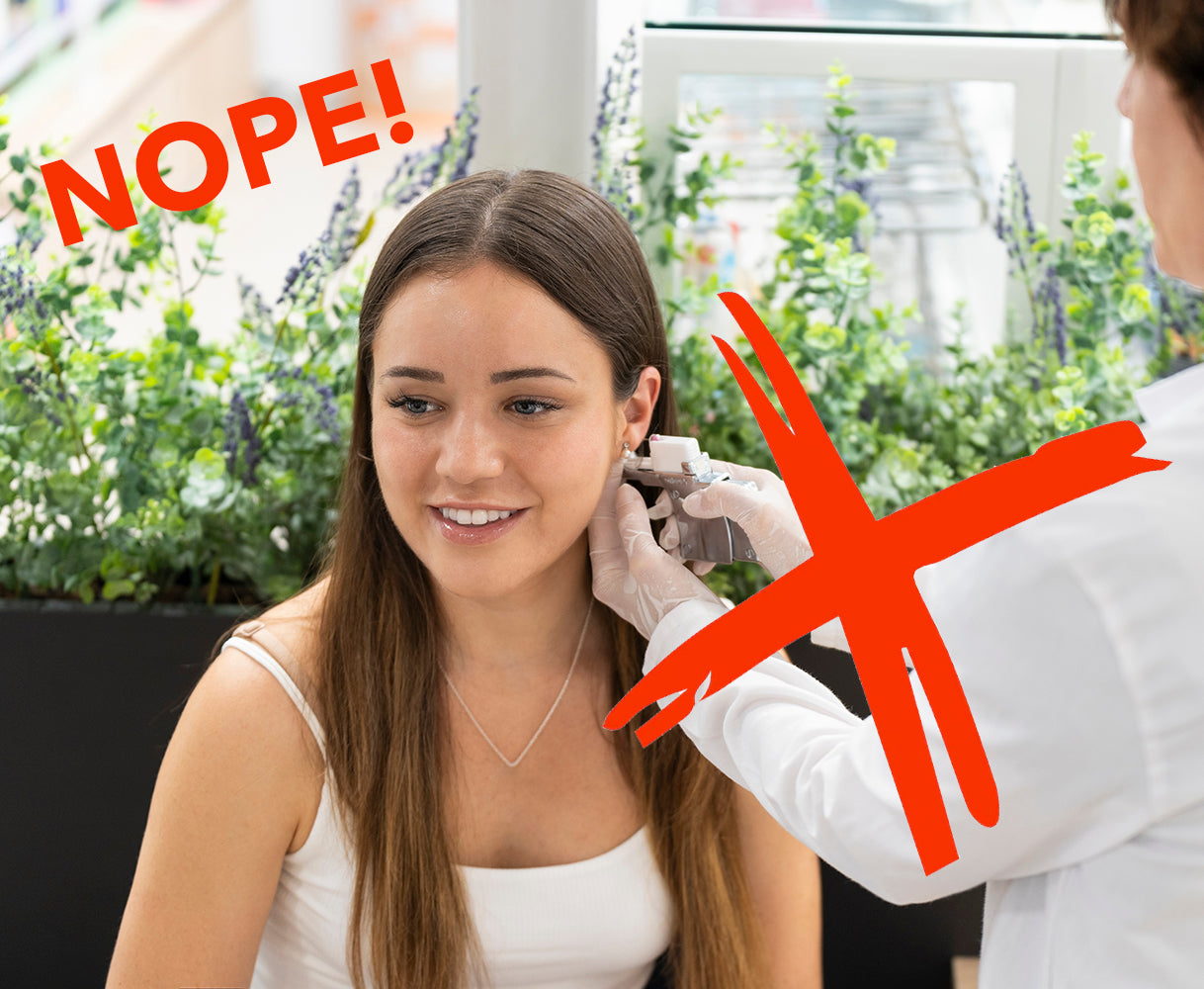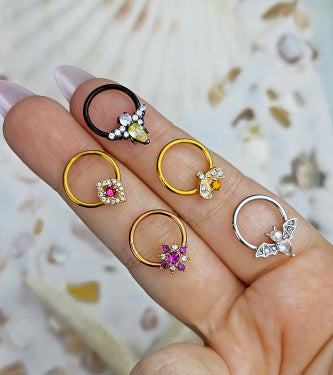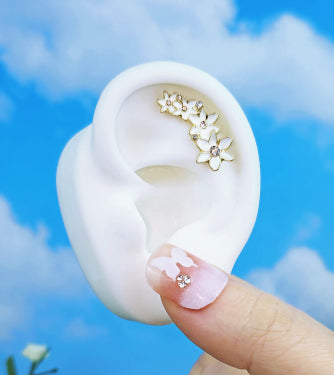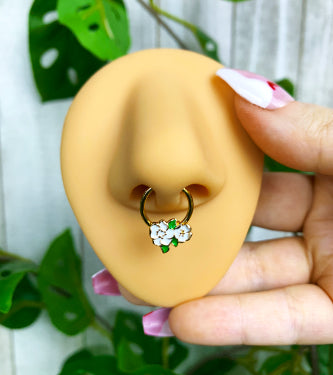If you spend any amount of time on piercing-related social media, you’ve probably seen the post. “Is my piercing nesting or embedding?” It can be a challenge just to check out your feed and miss one of these because they’re so common. So today we’re going to take a moment to review what they are and how to tell them apart so that you don’t have to add yet another one of these posts to the pile.

Nesting
Nesting is a totally normal thing for a piercing to do during the healing process. It happens when one of the jewelry ends (generally the top end or front end, depending on the piercing) settles into your flesh a little bit, creating a small divot. For example, if you’ve had a regular old vertical tongue piercing for a while, you’ve probably noticed a small dent in your tongue under the top ball end. That’s because of the end sitting on your tongue, rubbing against the tissue. It has created a tiny nest for itself. This is normal. You can still move the jewelry freely, there is no swelling or pain or redness, and the barbell sits comfortably in place.

Embedding
This is entirely NOT normal. Embedding is most likely to happen during the healing process, especially when your new piercing is still swollen or having flareups of swelling. It can happen to a healed piercing as well, if there is some kind of trauma to the piercing. The site swells to the point where it begins to engulf one or both ends of the jewelry. Either the swelling from your initial piercing has exceeded the length of the jewelry installed or the jewelry was simply not long enough to accommodate the swelling. It is most likely going to be red and painful as well. If you try to move the jewelry, it doesn’t shift in and out of place and feels “stuck”. This is a big problem and can turn into an actual emergency if not dealt with.
What Does Embedding Look Like?
This is an easy way to check if your jewelry embedded. Can you see the entire ball or charm end? Even if you have to push the opposite end a little bit, you should be able to see the entire ball or charm. If the skin covers the end to the point where you cannot see it in its entirety, that is a sure sign of embedding. It will look like your skin is swallowing the jewelry and you will not be able to free it.
It’s Embedded. What now?
If your piercing is, in fact, embedded in your flesh you need to make an emergency appointment with a trustworthy piercer. They should be able to help work the old jewelry out and replace it with longer jewelry that can accommodate the swelling and allow you piercing to heal properly from this. Time is of the essence in this situation, and it is incredibly important that you do this as quickly as you possibly can. If you do nothing and simply allow the jewelry to embed further, it can lead to serious complications. Your piercing is unlikely to heal properly, which would actually be the least of your problems. It may also develop an infection which would require medical attention to treat. If you ignore this issue entirely, your body can completely swallow the jewelry into your flesh which will require surgical intervention. Nobody wants that. If your jewelry is embedded, deal with it quickly because it will not improve with time.
So now that we’ve had an overview of embedding, nesting, and the difference between the two, hopefully you’ll be able to tell the difference if you should encounter one or the other. And the next time you see one of social media posts asking that very question, you’ll be able to either scroll past it or give a helpful response. Knowledge is power…. the power to know if your piercing is in need of urgent attention or just doing a natural piercing thing. Happy piercing!






